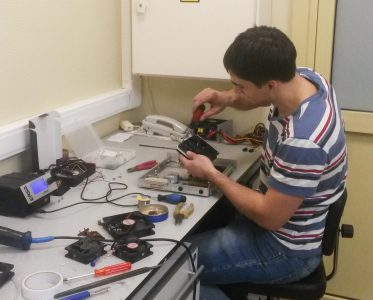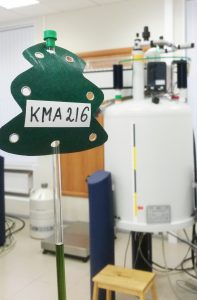Archive for A. Grevtsev
Colloid Surface A, 2017, 518, 273-282
A.S. Koneva, E.A. Safonova, P.S. Kondrakhina, M.A. Vovk, A.A. Lezov, Yu.S. Chernyshev, N.A. Smirnova
“Effect of water content on structural and phase behavior ofwater-in-oil (n-decane) microemulsion system stabilized by mixednonionic surfactants SPAN 80/TWEEN 80”
Colloid Surface A, 2017, 518, 273-282
DOI:10.1016/j.colsurfa.2017.01.020
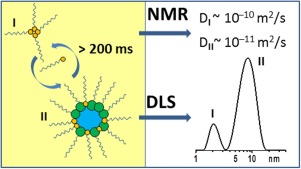
For the search of effective microemulsion systems with the properties demanded for various applica-tions the knowledge of structural properties of the reverse microemulsions for various compositionsand temperatures is of high value. In the present study, the microstructure and diffusion of the compo-nents of water-in-n-decane Winsor IV microemulsions stabilized by a mixture of nonionic surfactantsSpan 80 (sorbitane monooleate, HLB 4.9) and Tween 80 (polyoxyethylene sorbitan monooleate, HLB15.0) at the weight ratios 49:51 (i.e. at the maximal ability to solubilize water) were investigatedby viscosimetry, PGSTE NMR and DLS. The system phase diagram obtained at 298.2 K includes theintermediate heterogeneous region between the reverse micelles region and the microemulsions. Thewater-to-surfactant molar ratio was changed up to 15.5 (13 wt.% of water) at the weight ratios n-decane:surfactants 65:35 and 85:15. The microemulsion droplets are spherical (that is corresponded also to thecryo-TEM data) and grow with the increase of water content. The temperature effect on the aggregatesdiffusion (and on the aggregates size) in the range 298.2–318.2 K is not pronounced. The bimodal distri-butions of the diffusion coefficients determined using both DLS and PGSTE NMR methods are specific for the system. The slower diffusion mode relates to the diffusion of mixed microemulsion droplets with theradii Rh ∼10–20 nm. The second stable form of nanoaggregates are “dry” micelles with Rh ∼ 1–2 nm. Thedata on the diffusion coefficients are of special interest in particular for the molecular dynamic simulationof the reverse micelles or of the microemulsion droplets.
CMR projects in 2016
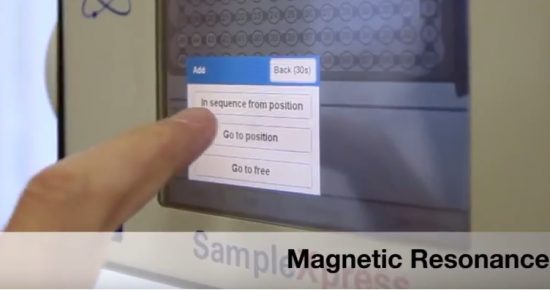
In total, 99 new projects have been submitted to CMR in 2016. More than 21 000 individual measurement requests have been fulfilled. We hope that in 2017 our contribution to the research and education will be even stronger! Good luck with your work!
December
Total in December 1938 service applications were carried out.
All together measured:
- 1852 1H spectra
- 310 13C spectra
- 155 DEPT spectra
- 22 COSY spectra
- 15 NOESY spectra
- 36 31P spectra
- 28 19F spectra
212 applications were carried out.
NMR soundtreck
 Previously we have written about the PC program playing back FID data (see the post from 29.04.2015). There is a logical continuation of this idea: a whole Christmas song performed on NMR spectra of molecules, see also the original blog entry by Andrew Hall from the University of Bath.
Previously we have written about the PC program playing back FID data (see the post from 29.04.2015). There is a logical continuation of this idea: a whole Christmas song performed on NMR spectra of molecules, see also the original blog entry by Andrew Hall from the University of Bath.
Tetrahedron Letters, 2017, 58, 172–174
M.A. Kuznetsov, A.N. Shestakov, M. Zibinsky, M. Krasavin, C.T. Supuran, S. Kalinin, M. Tanç
“Synthesis, structure and properties of N-aminosaccharin – A selective inhibitor of human carbonic anhydrase I”
Tetrahedron Letters, 2017, 58, 172–174
DOI:10.1016/j.tetlet.2016.12.005
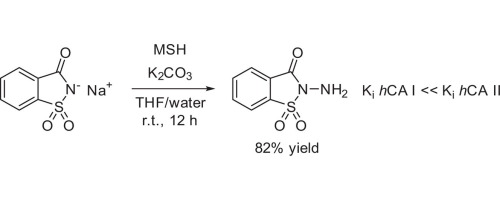
Previously unknown N-aminosaccharin was prepared in good yield via the one-step direct amination of saccharin sodium salt with hydroxylamine-O-mesitylenesulfonic acid (MSH) and its reactivity investigated. N-aminosaccharin and its derivatives were tested against hCA isoforms and the parent compound was identified to be a selective, low micromolar inhibitor (Ki = 8.8 lM) of hCA I. These findings provide a ligand-efficient starting point for the design of potent hCA I inhibitors – a promising drug target for retinal/cerebral edema treatment.
Molecules, 2016, 21, 1657-1/19
L. Sobczyk, D. Chudoba, P.M. Tolstoy, A. Filarowski
“Some Brief Notes on Theoretical and Experimental Investigations of Intramolecular Hydrogen Bonding”
Molecules, 2016, 21, 1657-1/19
DOI:10.3390/molecules21121657

A review of selected literature data related to intramolecular hydrogen bonding in ortho-hydroxyaryl Schiff bases, ortho-hydroxyaryl ketones, ortho-hydroxyaryl amides, proton sponges and ortho-hydroxyaryl Mannich bases is presented. The paper reports on the application of experimental spectroscopic measurements (IR and NMR) and quantum-mechanical calculations for investigations of the proton transfer processes, the potential energy curves, tautomeric equilibrium, aromaticity etc. Finally, the equilibrium between the intra- and inter-molecular hydrogen bonds in amides is discussed.
Phys. Chem. Chem. Phys., 2016, accepted
B. Koeppe, S.A. Pylaeva, C. Allolio, D. Sebastiani, E.T.J. Nibbering, G.S. Denisov, H.-H. Limbach, P.M. Tolstoy
“Polar solvent fluctuations drive proton transfer in hydrogen bonded complexes of carboxylic acid with pyridines: NMR, IR and ab initio MD study”
Phys. Chem. Chem. Phys., 2016, accepted
DOI:10.1039/C6CP06677A
We study a series of intermolecular hydrogen-bonded 1 : 1 complexes formed by chloroacetic acid with 19 substituted pyridines and one aliphatic amine dissolved in CD2Cl2 at low temperature by 1H and 13C NMR and FTIR spectroscopy. The hydrogen bond geometries in these complexes vary from molecular (O–H…N) to zwitterionic (O…H–N+) ones, while NMR spectra show the formation of short strong hydrogen bonds in intermediate cases. Analysis of CQO stretching and asymmetric CO2 stretching bands in FTIR spectra
reveal the presence of proton tautomerism. On the basis of these data, we construct the overall proton transfer pathway. In addition to that, we also study by use of ab initio molecular dynamics the complex formed by chloroacetic acid with 2-methylpyridine, surrounded by 71 CD2Cl2 molecules, revealing a dualmaximum distribution of hydrogen bond geometries in solution. The analysis of the calculated trajectory shows that the proton jumps between molecular and zwitterionic forms are indeed driven by dipole–dipole solvent–solute interactions, but the primary cause of the jumps is the formation/breaking of weak CH…O bonds from solvent molecules to oxygen atoms of the carboxylate group.
November
Total in November 1963 service applications were carried out.
All together measured:
- 1883 1H spectra
- 329 13C spectra
- 144 DEPT spectra
- 31 COSY spectra
- 13 NOESY spectra
- 107 31P spectra
- 54 19F spectra
206 applications were carried out.
